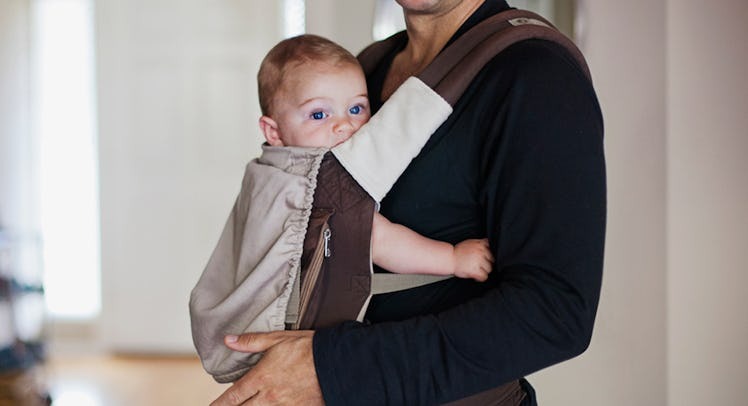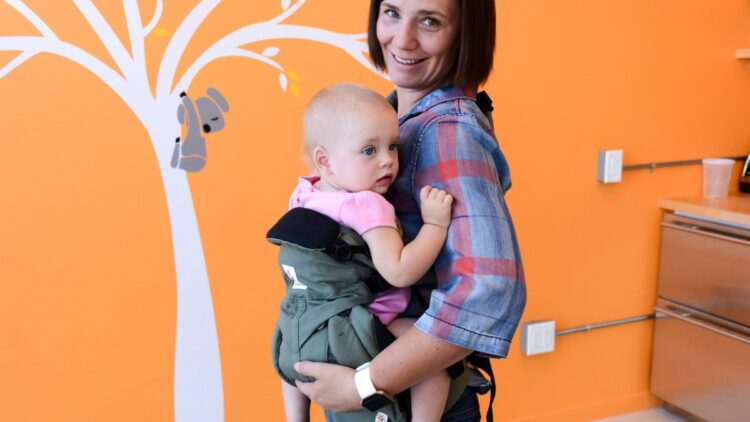Have you ever wondered how many parents struggle with babywearing without even realizing what’s going wrong? According to a recent survey, over 60% of new caregivers admit they faced issues during the first few weeks. But the good news? Most problems have simple solutions.
Key Points
- Proper positioning ensures baby’s safety.
- Choosing the right carrier makes a huge difference.
- Frequent checks prevent common errors.
- Comfort for both the baby and the caregiver matters.
- Adjustments are necessary as the baby grows.
Choosing the Right Carrier for Your Baby’s Comfort and Safety

Selecting the perfect option can feel overwhelming with so many choices available. It’s not just about style; it’s about support and safety. Reliable baby carriers offer secure designs that distribute weight evenly, reducing strain on your back and shoulders. Look for carriers with adjustable straps, proper head support, and breathable fabric. Trying different models helps find what suits both you and your baby best.
Key Features to Consider:
- Adjustability: Allows for a snug fit as your baby grows.
- Support: Look for structured waistbands and padded shoulder straps.
- Ease of Use: Some carriers have complex buckles; try them to see what feels intuitive.
- Material: Breathable fabrics help regulate temperature.
Pro Tip:
If possible, test carriers in person before buying. Many baby stores offer try-on stations, letting you find the best fit for your body type.
Not Checking Baby’s Position Regularly
Babies grow fast, and so do their needs. Regular checks help ensure they stay in the correct position. Here’s what to watch for:
- Chin off the chest: Ensure clear airways. A tucked chin can restrict breathing.
- Knees above the hips: Supports healthy hip development, reducing the risk of hip dysplasia.
- Visible and kissable: The baby’s face should be visible at all times. This ensures quick response to any distress.
Practical Example:
Imagine walking through the park with your baby. Every 15-20 minutes, discreetly check their positioning, adjust if needed, and carry on. Small adjustments prevent bigger issues.
Ignoring Your Own Comfort Can Lead to Long-Term Issues

Your comfort matters as much as your baby’s. Discomfort can cause tension and even lead to posture problems.
Tips for Staying Comfortable:
- Adjust straps before heading out.
- Use carriers with padded shoulder straps.
- Distribute weight evenly across both shoulders.
- Avoid carrying the baby too low; keep them high and close.
Key Benefits:
- Improved Posture: Reduces strain on your spine.
- Longer Carry Times: Comfort allows for extended wear without fatigue.
- Bonding Without Discomfort: Enjoy closeness without back pain.
Dressing Your Baby Inappropriately for the Weather
Babies are sensitive to temperature changes. Overdressing or underdressing can cause discomfort.
Quick Guidelines:
- In warm weather: Lightweight fabrics, hats for sun protection.
- In cold weather: Layered clothing, avoiding bulky outfits that affect strap fit.
- Always: Check baby’s neck or back for signs of overheating.
Recommendations:
- Use breathable materials in hot climates.
- In winter, wear the carrier under your coat and dress the baby in lighter layers.
- Carry a small blanket for extra warmth if needed.
Misunderstanding the Importance of Tightness

A common error is having the carrier too loose. This reduces support and increases risks.
Key Reminders:
- The baby should be snug against your body.
- No slumping or gaps between you and the baby.
- Test tightness by leaning forward slightly; the baby should not pull away.
Pro Tip:
Use the “Hug Test.” If the carrier feels like a firm hug around your baby, it’s tight enough.
Skipping Professional Guidance When Needed
Sometimes, a quick YouTube tutorial isn’t enough. Seek professional advice when unsure.
Benefits of Expert Help:
- Personalized fitting tips.
- Identifying mistakes you might overlook.
- Learning advanced techniques for better support.
Where to Find Help:
- Certified babywearing consultants.
- Local parenting groups.
- Community workshops.
Overlooking Signs of Baby Discomfort
Babies communicate discomfort through fussiness, arching backs, or unusual crying.
Watch for:
- Red marks on skin from tight straps.
- Restricted movement.
- Excessive sweating or cool extremities.
Practical Examples:
If your baby fusses only when in the carrier, it might be too tight, too loose, or causing pressure points. Experiment with minor adjustments.
Failing to Adjust as Your Baby Grows

Growth spurts happen fast. What fit well last month might not work today.
Growth Checkpoints:
- Adjust straps monthly.
- Ensure proper head and neck support.
- Reassess positioning after every growth milestone.
Key Benefits of Adjustments:
- Promotes healthy development.
- Reduces caregiver strain.
- Increases overall comfort.
Neglecting to Read the Carrier’s Manual
Many overlook the manual, but it contains vital safety information. Reading it ensures you understand weight limits, proper adjustments, and maintenance tips.
Recommendations:
- Keep the manual handy for quick reference.
- Watch brand-specific tutorials.
- Follow maintenance guidelines to prolong carrier lifespan.
Final Thoughts
Babywearing offers countless benefits, fostering closeness and convenience. By staying mindful of proper positioning, comfort, and safety checks, you create a secure environment for your baby and yourself. Remember, small adjustments can make a huge difference. Trust your instincts, seek help when needed, and enjoy the journey.
 Hi Boox Popular Magazine 2024
Hi Boox Popular Magazine 2024



